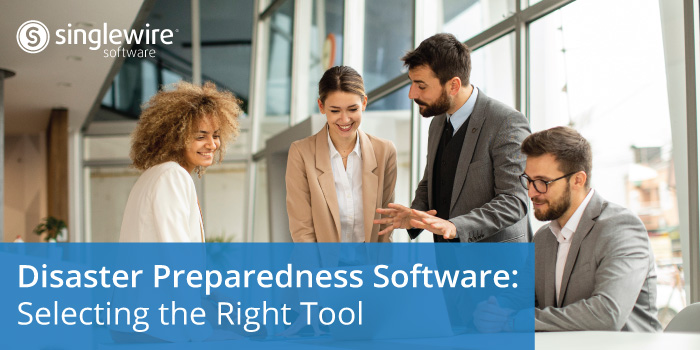The Importance of Disaster Preparedness Software
As organizations continue to face a wide range of potential emergencies and disasters, the need for effective disaster preparedness software has become increasingly critical. From natural disasters to security incidents, having the right tools in place can make all the difference in keeping people safe and minimizing disruptions. However, finding the right disaster preparedness software can be a daunting task. Selecting the wrong tool can lead to ineffective communication, delayed responses, and potential risks to personnel and property. To help organizations navigate this crucial decision, it is important to explore the challenges of finding the right solution and understand the dangers of selecting the wrong tool. Here are five mistakes to avoid when choosing disaster preparedness software.
1. Limited Message Formats
When seeking disaster preparedness software, one of the critical features to consider is the ability to send messages in multiple formats including text, audio, and visuals. In emergency situations, officials must convey information quickly and effectively to ensure that recipients receive and understand critical instructions. Limited message formats can lead to delays and hinder the ability to communicate urgent information. Therefore, it is imperative to choose a software solution that provides versatile messaging options to address various communication needs during a disaster or emergency. The more message formats an organization can leverage the less likely it is that someone misses a message that impacts their safety.
2. Disaster Preparedness Software with Restrictive Scenarios
Disasters and emergencies come in all shapes and sizes, and no two situations are exactly alike. Therefore it is crucial to avoid disaster preparedness software that restricts the types of emergencies your organizations can plan for and communicate around. The right tool should allow organizations to customize and configure scenarios to match their specific needs and potential emergency situations. Whether it’s a natural disaster, a security breach, or a medical emergency, organizations need the flexibility to tailor their response plans and communication strategies. Customizable scenarios ensure that organizations can effectively address a wide range of potential disasters and emergencies, from severe issues to minor inconveniences.
3. Siloed Technology
An interconnected and integrated approach is essential when selecting this type of software. It is crucial for the selected tool to seamlessly integrate with the organization’s existing technology infrastructure. Siloed technology can lead to inefficiencies, missed communication opportunities, and redundant systems. Therefore, it is imperative to choose a solution that offers wide-ranging integration capabilities, allowing organizations to leverage their current resources while enhancing their disaster preparedness and response capabilities.
4. Insubstantial Configuration Options
In times of crisis, it is crucial to ensure that information reaches the right people promptly without causing disruptions elsewhere. Disaster preparedness software should provide the ability to designate groups and zones, enabling organizations to target and deliver information to the appropriate recipients while avoiding unnecessary disruptions to unaffected areas. Insubstantial configuration options in defining recipient groups and zones can lead to ineffective communication and hinder the organization’s ability to manage a disaster or emergency efficiently.
5. Insufficient Feature Sets
Lastly, it is important to avoid disaster preparedness software that offers an insufficient feature set. The right tool should encompass a broad range of functionalities to meet diverse requirements. From disaster preparedness and incident management to mass notification and daily operations, a comprehensive set of features within a single tool can provide value by reducing the need to manage multiple disparate solutions. Having a wide array of features at their disposal enables organizations to streamline their disaster preparedness efforts, enhance communication, and effectively manage a variety of situations.
Disaster preparedness software plays a vital role in ensuring safety and order during emergencies, proving the importance of having the right tools in place. By avoiding the mistakes of limited message formats, restrictive scenarios, siloed technology, insubstantial parameters, and insufficient feature sets, organizations can make an informed decision when selecting a disaster preparedness software solution. Prioritizing the ability to send versatile messages, customize scenarios, integrate with existing technology, define recipient parameters, and access a comprehensive feature set will empower organizations to enhance their disaster preparedness and response capabilities, ultimately safeguarding their personnel and assets in the face of potential emergencies and disasters. To discover more about how disaster preparedness software can improve your organization’s safety and resilience, visit our Incident Management page.
